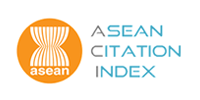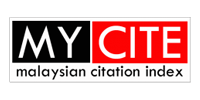The Hydrothermal Synthesis of TiO2-GO with Enhance Photocatalytic Activity
DOI:
https://doi.org/10.58915/ijneam.v17iDecember.1602Keywords:
TiO2-GO composite, Graphene oxide, Hydrothermal method, PhotocatalyticAbstract
A composite material consisting of titanium dioxide and graphene oxide (TiO2–GO) was synthesized through a hydrothermal reaction. This reaction involved the use of Ti(SO4)2 in an ethanol–water solvent. Different content of GO was studied to find the optimum parameter. The composites were subjected to characterization, encompassing an examination of their composition, structure, and microstructure through techniques such as X-ray diffraction (XRD), Raman spectra, scanning electron microscopy (SEM), and ultraviolet-visible diffuse reflectance spectroscopy. For Raman spectra, the presence of a G-band at approximately 1599 cm-1 and a D-band at 1350 cm-1 in the spectra indicates the presence of graphene oxide (GO). Therefore, the modified Hummer method synthesized graphite to GO. The findings for the XRD spectrum concerning the TiO2–GO composites revealed the presence of finely dispersed anatase TiO2 particles on the surface of the graphene oxide sheet layer. Diffraction pattern similar to pristine TiO2, only for TiO2–GO(0.75) and the peak for rutile TiO2 at 2Ɵ values 27.08° for both technique and TiO2–GO(0.5) for spray technique. Apparently, GO sheets were almost covered by anchored TiO2 particles, providing the possibility of efficient electronic conducting and electron transportation as in the SEM microstructures. EDS analysis shows the excessive carbon element for TiO2-GO(0.75) and TiO2-GO(1). The findings concerning the TiO2–GO composites revealed the presence of finely dispersed anatase TiO2 particles on the surface of the graphene oxide sheet layer. Notably, the photocatalytic performance of the TiO2–GO composite significantly surpassed that of pure TiO2 in the photodegradation of methyl blue (MB) when exposed to sunlight. The spray technique had a higher photocatalytic degradation percentage which is 82% for TiO2-GO(0.25) compared to the dropped technique 79% which is TiO2-GO(0.5). Degradation analysis of methyl blue concluded that the improved photocatalytic activity of TiO2–GO primarily results from the enhanced efficiency in trapping and transporting electrons, which can be attributed to the presence of graphene oxide (GO).

















